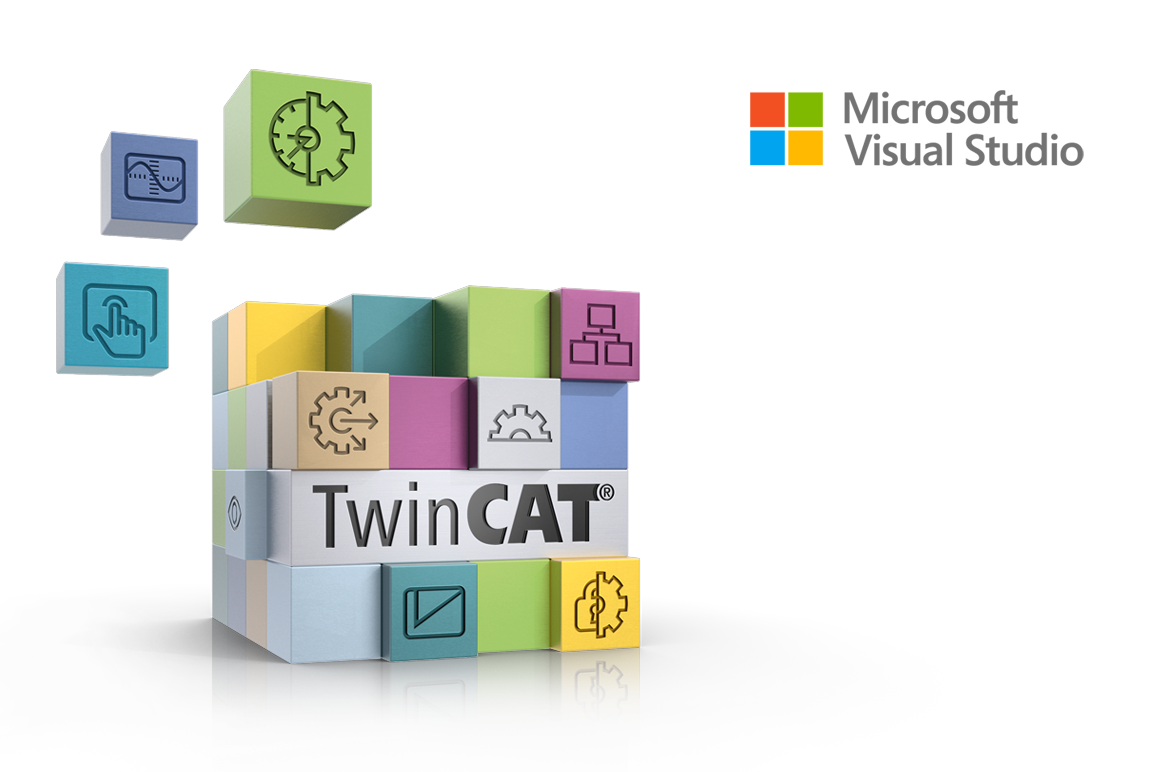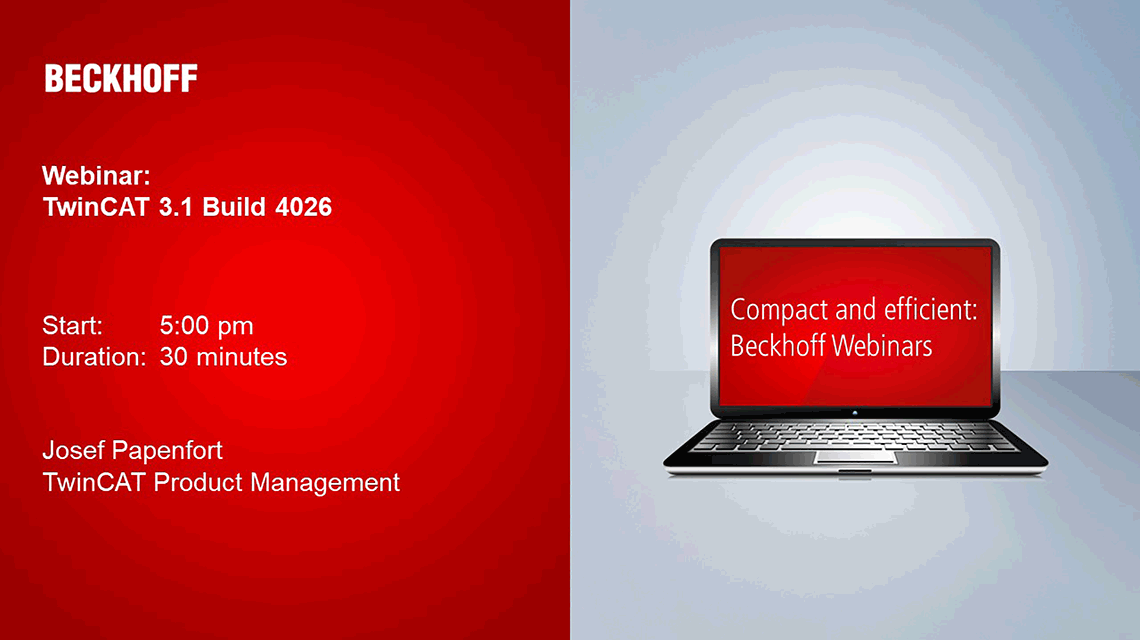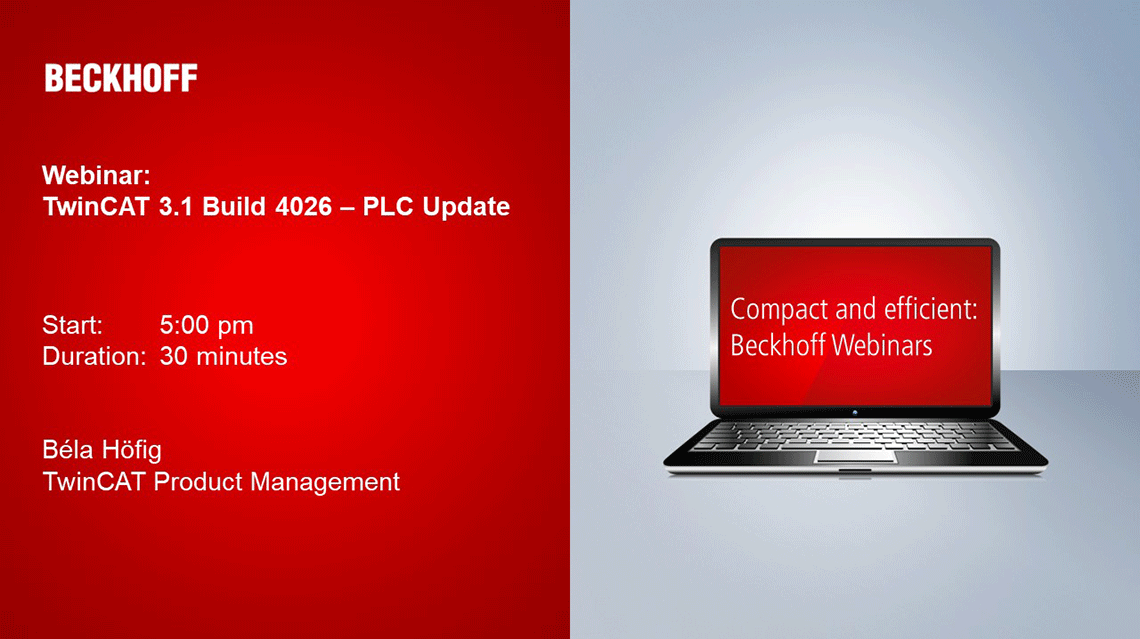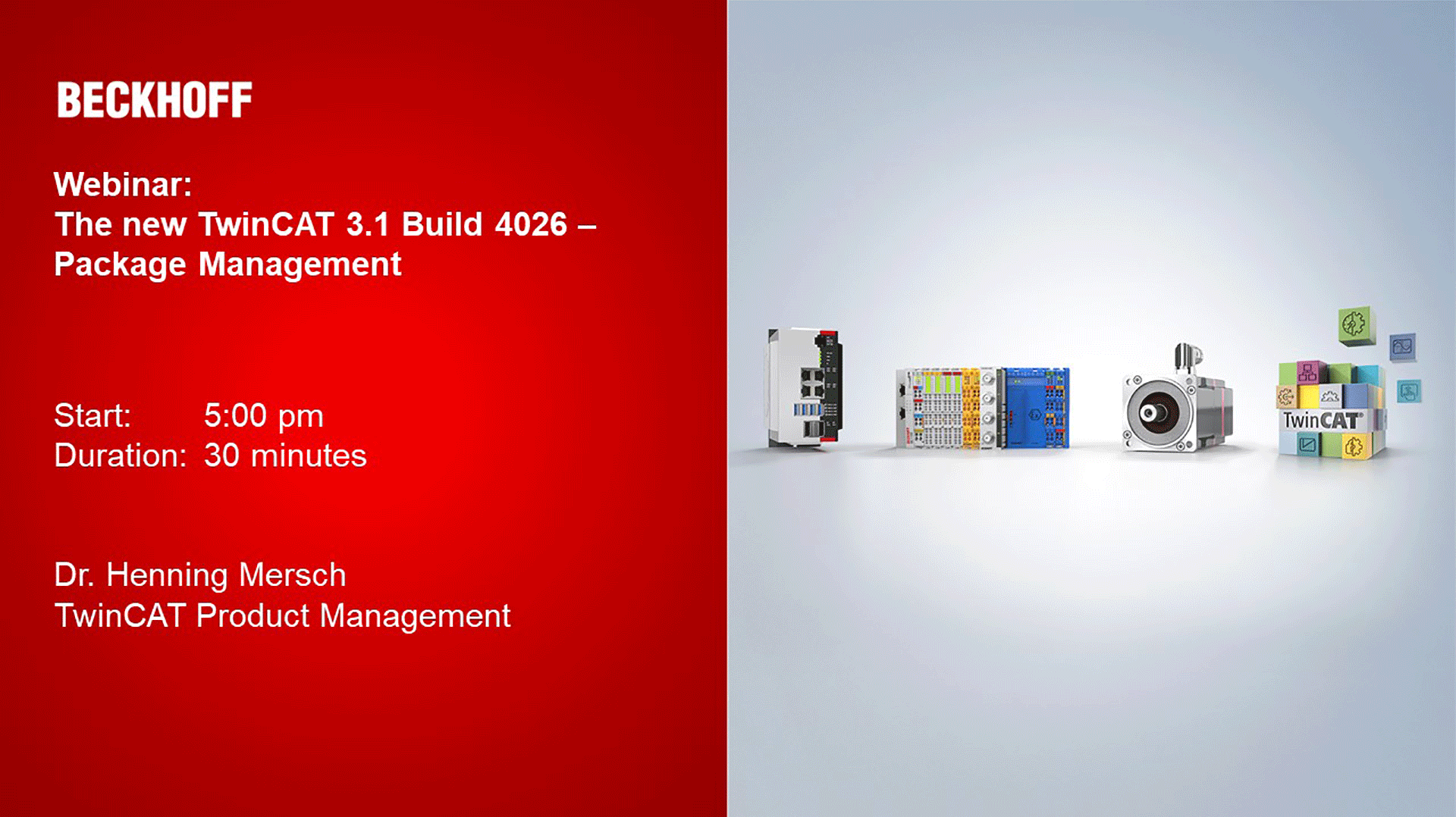More flexibility in automation development through modularity and extensions

Thanks to a new type of mediatized setup, TwinCAT can not only be installed on an industrial PC in three variants as before. Instead, specific packages can be selected according to preference and then installed or updated. In addition to being able to update components independently, customers simultaneously benefit from faster installation and shorter update times.

TwinCAT 3.1 Build 4026 can also be used with Microsoft Visual Studio 2022. The support of Microsoft Visual Studio 2022 provides a 64-bit environment for engineering, allowing more main memory to be used for larger projects. The XaeShell supplied by TwinCAT is also available in an updated variant based on Microsoft Visual Studio 2022. TwinCAT 3.1 Build 4026 supports Microsoft Visual Studio 2022 as well as the 2017 and 2019 versions.

The following new Beckhoff software is based on TwinCAT 3.1 Build 4026 for release:
- TE1030 TwinCAT 3 Documentation Generation
- TE1130 TwinCAT 3 CAD Simulation Interface
- TE1210 TwinCAT 3 PLC Profiler
- TE6100 TwinCAT 3 OPC UA Nodeset Editor
- TC1700 TwinCAT 3 Usermode Runtime
- TC1701 TwinCAT 3 Usermode Runtime: External Control
- TC1702 TwinCAT 3 Usermode Runtime: Fast As Possible
- TF5221 TwinCAT 3 CNC Axes Pack unlimited
- TF5261 TwinCAT 3 CNC Realtime Cycles
- TF6105 TwinCAT 3 OPC UA publisher-subscriber model
- TF6230 TwinCAT 3 Parallel Redundancy Protocol (PRP)
- TF6770 TwinCAT 3 IoT WebSockets
- TF6771 TwinCAT 3 IoT OCPP
The innovations at a glance

This short video introduction and the webinars for the new TwinCAT 3.1 Build 4026 offer an overview of the most significant innovations in the following version:
- TwinCAT 3.1 Build 4026 – What's new?
- TwinCAT 3.1 Build 4026 – Introduction (webinar)
- TwinCAT 3.1 Build 4026 – PLC updates (webinar)
- TwinCAT 3.1 Build 4026 – Package management (webinar)
Previous version TwinCAT 3.1 Build 4024
The previous version of TwinCAT 3.1 Build 4026 is the Build 4024 version. It is also still valid. All properties of Build 4024 are included in the latest version 4026.
Build 4024: Increased efficiency and integration in engineering

- several programmers can work on a PLC project simultaneously
- integrated workflow
- reduces the commissioning time
- high traceability




